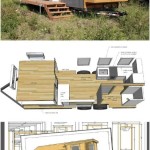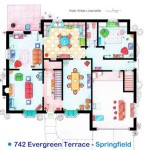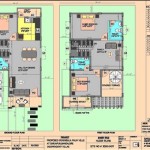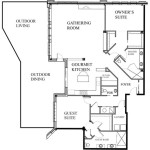Unveiling the Essences of Japanese House Floor Plan: A Comprehensive Guide
Japanese architecture, renowned for its harmony with nature and exquisite craftsmanship, extends its influence to the realm of house floor plans. These plans, meticulously designed, reflect a deep understanding of traditional aesthetics and modern functionality. This comprehensive guide will delve into the essential aspects of Japanese house floor plans, illuminating their unique characteristics and cultural significance.
1. Genkan: The Welcoming Threshold
The genkan serves as the entryway to a Japanese home, acting as a transitional space between the outside world and the private interior. Typically featuring a sunken floor, it provides a designated area for removing shoes and exchanging slippers. The genkan's presence emphasizes the Japanese concept of iemoto, the distinction between the inside and outside spheres.
2. Washitsu: Tatami-Matted Harmony
Washitsu are traditional Japanese rooms characterized by tatami mats, natural woven flooring made from rice straw. These mats create a warm and inviting atmosphere, providing a comfortable and versatile space for various activities, including sleeping, dining, and tea ceremonies. Their standardized size and modular nature allow for flexible room configurations.
3. Engawa: The Blurring of Boundaries
Engawa, also known as a verandah or covered porch, is a unique feature of Japanese homes. As a semi-outdoor space, it connects the interior and exterior, seamlessly blurring the boundaries between living spaces and nature. Engawa provides a tranquil retreat, offering views of the garden or surrounding landscape.
4. Shoji and Fusuma: Sliding Transitions
Shoji and fusuma are traditional sliding doors integral to Japanese house floor plans. Shoji, made of translucent rice paper, provide natural light while maintaining privacy. Fusuma, on the other hand, are opaque sliding panels that serve as room dividers. These sliding elements allow for flexible space configurations, enabling rooms to be expanded or divided as needed.
5. Tokonoma: Artistic Focal Point
Tokonoma is a recessed alcove in the wall, a prominent feature in traditional Japanese houses. It acts as a focal point for artistic displays, showcasing a scroll painting, a flower arrangement, or a sculpture. Tokonoma reflects the Japanese appreciation for beauty and nature, creating a serene and contemplative space.
6. Garden Integration: Nature's Embrace
Japanese house floor plans often incorporate gardens as an extension of living spaces. Sliding doors and windows seamlessly connect indoor and outdoor areas, blurring the lines between nature and home. Gardens provide tranquility, natural light, and a sense of spaciousness to the living environment.
7. Modern Interpretations: Embracing Progress
While traditional Japanese house floor plans continue to inspire modern designs, contemporary interpretations often blend traditional elements with modern amenities. These modern floor plans may incorporate open-concept living areas, large windows for natural light, and Western-style kitchens. However, the essence of Japanese aesthetics, such as the emphasis on natural materials and a connection to nature, remains evident.
In conclusion, Japanese house floor plans embody a profound understanding of space, nature, and cultural traditions. From the welcoming genkan to the exquisite washitsu and the seamless transitions created by shoji and fusuma, these plans reflect a deep respect for harmony, privacy, and the beauty of nature. Whether traditional or modern, Japanese house floor plans continue to captivate with their timeless elegance and cultural significance.

Hachidori Floor Plan Traditional Japanese House Japan Design Home Plans

Typical Home Layouts Differences Between Japan And Abroad

Japanese House Floor Plan Courtyard Google Search Traditional Style Plans

Japanese Home Design Ideas Pictures 331 Sqm Homestyler

Traditional Japanese House Floor Plan Google Search Plans

The Floor Plan Of Apartments In Japan Japanese Home Archi Designer

The Layout Of Ground And First Floor A Traditional Japanese House Scientific Diagram

Japanese Home Design Ideas Pictures 331 Sqm Homestyler
In Praise Of The Japanese Imagination Houseplans Blog Com

Traditional Japanese House Floor Plans With Drawings Upgradedhome Com








